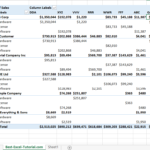Resolving Excel can’t find project or library
Imagine you’re working on a crucial Excel project, incorporating various functions and relying on different libraries for advanced features. Suddenly, you encounter the frustrating error message: “Excel can’t find project or library”. This error can halt your progress, leaving you puzzled about how to proceed. Let’s navigate this issue together, understanding why it happens and how to fix it, using an illustrative example to make it all the more relatable.
Understanding the “Can’t Find Project or Library” Error
This error typically occurs when Excel fails to locate an object, method, or property that your project references. It might be due to a missing library, a broken reference, or even a different version of Excel where the library isn’t available.
Identifying the Problem
Let’s say you’ve built a spreadsheet that calculates complex financial models. You’ve shared this file with a colleague who uses an older version of Excel. When they try to open it, they’re greeted with the “can’t find project or library” error. The spreadsheet relies on a library present in your Excel version but missing or incompatible with your colleague’s version.
Step-by-Step Guide to Fixing the Error
- Open the Visual Basic Editor: Press ALT + F11 to open the editor in Excel where you can manage project references.
- Check for Missing References: Go to the Tools menu and select References. Here, you’ll see a list of all libraries your project uses. Any missing ones will be marked as MISSING.
- Remove or Replace Missing References: If you find a missing reference, try to clear the checkbox next to it or replace it with an available version compatible with your Excel version.
How to Avoid Common Mistakes
- Compatibility Check: Before sharing Excel files that use advanced functions or libraries, ensure they’re compatible with other versions of Excel.
- Keep Libraries to a Minimum: Only use essential libraries to reduce the risk of compatibility issues.
- Provide Guidance for Recipients: If your Excel file requires specific libraries, include instructions for recipients on how to install or update these libraries.
An Example to Guide You
Imagine you’ve used a form control library in your Excel project that isn’t available in older Excel versions. When your colleague opens the file, they encounter the error. By following the steps above, you identify the form control library as the culprit. You then guide your colleague through adding the library to their Excel setup, or you modify the project to remove the dependency on that specific library, thereby resolving the error.
This scenario underscores the importance of understanding the dependencies in your Excel projects and ensuring compatibility across different Excel versions. It’s a common hurdle that, once understood, can be easily overcome with a bit of troubleshooting and forward planning.


